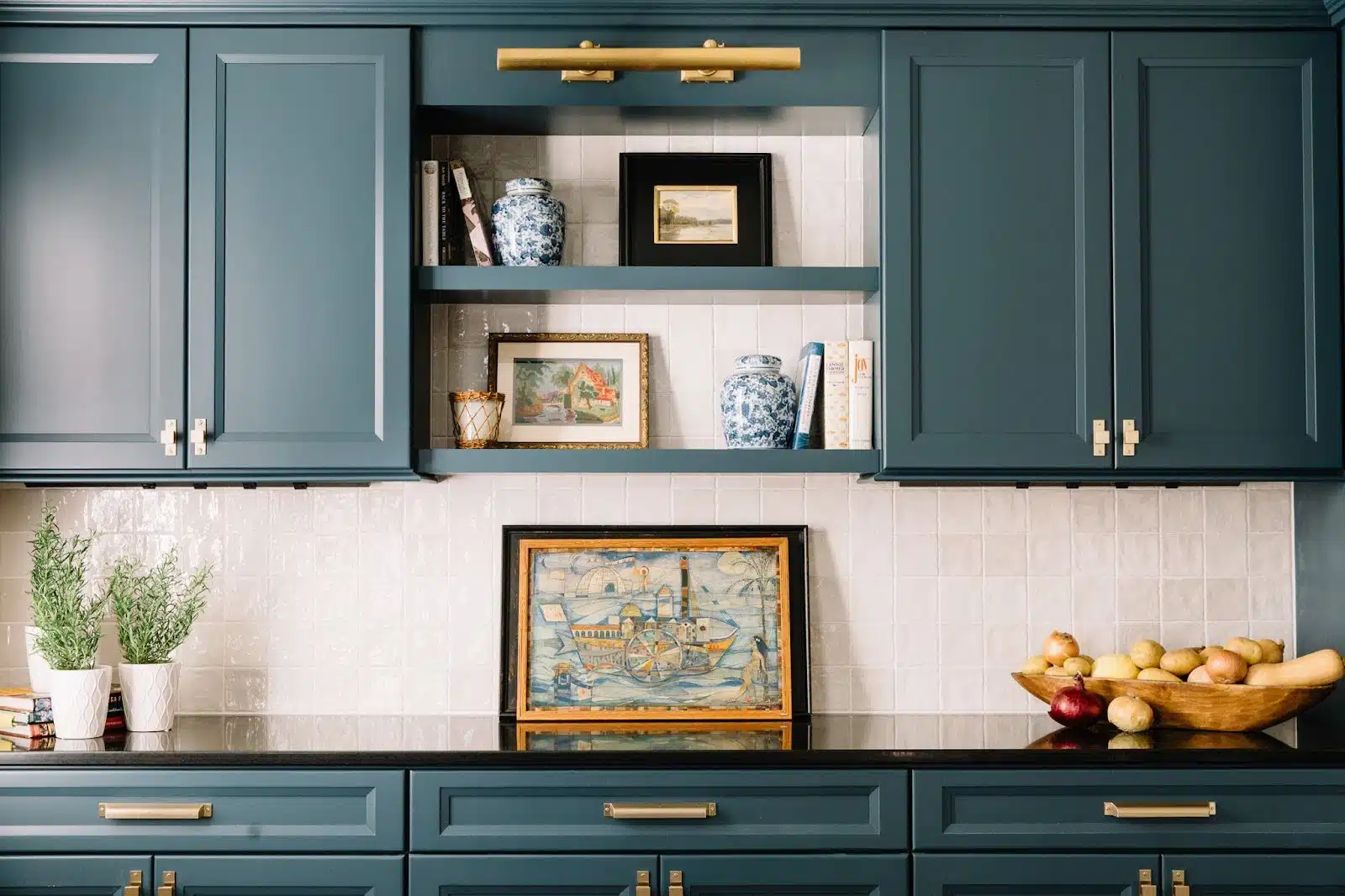
Licensing for Interior Designers: Is It Needed?
Interior design is a profession that requires a combination of creativity, technical skill, and knowledge of the industry.
With the growing popularity of this field, the question arises: is licensing necessary for interior designers?
In this article, we will explore the basics of interior design licensing, the pros and cons of obtaining a license, the process of getting licensed, the difference between licensing and certification, and the impact of licensing on professional practice.
We firmly believe people are happier and healthier when they have a well designed home that is attractive, easy to care for and that makes their daily routines more enjoyable.
If you’re ready to invest in your home and want to work with a company that pays attention to details and provides excellent customer service, schedule a discovery call.
Understanding the Basics of Interior Design Licensing
Interior design licensing refers to the legal requirement for interior designers to obtain a license that allows them to practice their profession. This license is typically issued by a government agency or a professional organization that oversees the interior design industry.
Interior design is a multifaceted profession that involves creating functional and aesthetically pleasing spaces. Licensed interior designers have the knowledge and skills to understand building codes, spatial layouts, color theory, and materials. They work closely with clients to transform their visions into reality, ensuring that the design looks beautiful and meets safety and regulatory standards.
What is an Interior Design License?
An interior design license is a form of professional recognition that demonstrates an individual’s competency and qualifications in interior design. It signifies that the designer has met certain educational and experience requirements and passed a standardized examination.
Obtaining a license involves completing a formal education in interior design, gaining practical experience through internships or apprenticeships, and successfully passing a licensing exam.
This rigorous process ensures that licensed interior designers are well-prepared to handle the complexities of designing interior spaces for various purposes, such as residential, commercial, or institutional settings.
The Purpose of Licensing in Interior Design
The main purpose of licensing in interior design is to protect the public’s health, safety, and welfare. By setting minimum standards for education, experience, and ethical conduct, licensing ensures that only qualified individuals can provide interior design services. This helps to prevent unqualified or inexperienced designers from potentially harming the public.
Furthermore, licensing promotes professionalism and accountability within the interior design industry. Licensed designers are held to high standards of practice and must adhere to a code of ethics that prioritizes the well-being of their clients. This commitment to ethical conduct and continuous professional development sets licensed interior designers apart as trusted experts in their field, capable of delivering exceptional design solutions that enhance the quality of life for those who inhabit the spaces they create.
Related Post: What is Design Build Remodeling?
Instead of trying to coordinate separate designers, showrooms and remodeling contractors design build remodeling by McManus Kitchen and Bath provides a single place where you can meet 1 on 1 with your whole project team.
The Pros and Cons of Interior Design Licensing
While interior design licensing has its advantages, it also has its drawbacks. It is important to consider both perspectives before deciding whether it is necessary.
Benefits of Having an Interior Design License
One of the main benefits of having an interior design license is the professional recognition it brings. It demonstrates to clients and employers that the designer has met rigorous standards and is committed to their craft. Additionally, a license can give interior designers a competitive edge in the job market, as many clients and employers prefer to work with licensed professionals.
Furthermore, having an interior design license can open doors to exciting opportunities. Licensed designers often have access to exclusive industry events, conferences, and networking opportunities. These events allow designers to connect with other professionals in the field, gain inspiration, and stay up-to-date with the latest trends and innovations.
Another advantage of licensing is the increased credibility and trust it provides. Clients are more likely to trust a licensed designer, knowing they have undergone a thorough screening process and adhere to ethical standards. This can lead to more opportunities for projects and higher client satisfaction.
Moreover, a license can give designers a sense of pride and accomplishment. It signifies that they have invested time and effort into their education and professional development, setting them apart from those who have yet to pursue licensing. This sense of achievement can boost confidence and motivation, continuously driving designers to improve their skills and knowledge.
Potential Drawbacks of Licensing
Despite its benefits, interior design licensing also has potential drawbacks. One of the main concerns is the cost and time required to obtain a license. The educational requirements, examination fees, and ongoing license maintenance can be financial burdens for aspiring designers.
Additionally, obtaining a license can be time-consuming. Designers may need to complete several supervised work hours, undergo extensive training, and pass rigorous exams. This can delay their entry into the workforce and hinder their ability to start their businesses or take on independent projects.
Another drawback is the potential for limited professional freedom. Licensing often comes with regulations and restrictions that designers must adhere to. This could limit their creativity and flexibility in designing spaces to meet client needs. However, it is important to remember that these regulations are in place to protect the public’s welfare.
Furthermore, some argue that licensing creates barriers to entry in the field of interior design. Aspiring designers who cannot afford the costs associated with licensing may be excluded from pursuing their passion or accessing certain job opportunities. This can result in a lack of diversity and innovation within the industry.
In conclusion, interior design licensing has its pros and cons. While it provides professional recognition, credibility, and access to exclusive opportunities, it can also be costly, time-consuming, and restrictive. It is crucial for designers and stakeholders to carefully weigh these factors and consider the impact of licensing on the industry as a whole.
The Process of Getting an Interior Design License
The process of obtaining an interior design license varies depending on the jurisdiction and the requirements set by the governing body. However, there are some common steps that most aspiring designers must follow.
One important aspect of the licensing process is submitting a detailed portfolio showcasing the designer’s work. This portfolio often includes photographs, sketches, and plans of past projects to demonstrate the designer’s skills and style. Review boards may carefully assess these portfolios to ensure that the designer meets the necessary standards for licensure.
Educational Requirements for Licensing
The first step towards obtaining a license is completing the necessary educational requirements. This typically involves earning a degree in interior design from an accredited institution. Some jurisdictions may also require a specific number of years of work experience in the field.
Furthermore, continuing education is often required to maintain an interior design license. Designers may need to participate in workshops, seminars, or courses to stay updated on the latest industry trends, technologies, and regulations. This commitment to ongoing learning helps ensure that licensed designers provide clients with the most current and innovative design solutions.

The Examination Process
After meeting the educational requirements, aspiring designers must pass a standardized examination that tests their knowledge and skills in design principles, building codes, and professional ethics. A professional organization or a government agency may administer the examination.
Additionally, some jurisdictions require designers to complete an internship or apprenticeship under the supervision of a licensed interior designer. This hands-on experience allows aspiring designers to apply their knowledge in real-world settings, gain practical skills, and understand the day-to-day responsibilities of a professional in the field. Mentoring relationships formed during internships can also provide valuable networking opportunities and guidance as designers navigate their careers.
Licensing vs. Certification in Interior Design
It is important to distinguish between licensing and certification in the field of interior design. While both are forms of professional recognition, the two have key differences.
When it comes to licensing in interior design, it is essential to understand that it is a mandatory legal requirement for practicing professionals. A license signifies that an individual has met the specific educational and experience criteria set by the governing body in their jurisdiction. This process aims to ensure that interior designers have the necessary skills and knowledge to protect the public’s health, safety, and welfare.
Key Differences Between Licensing and Certification
Licensing is a legal requirement that allows individuals to practice interior design, while certification is a voluntary process indicating an individual’s proficiency in a specific design area. Professional organizations often offer certification and require designers to meet certain criteria, such as completing continuing education courses or passing an examination.
On the other hand, certification in interior design is a voluntary credential that demonstrates a designer’s commitment to excellence and ongoing professional development. It allows designers to showcase their expertise in specialized areas of design, such as sustainable design or universal design principles. By obtaining certifications, designers can enhance their credibility and marketability within the industry.
Which is More Beneficial: License or Certification?
Whether a license or certification is more beneficial depends on the individual’s goals and the requirements of their jurisdiction. Both may be advantageous in some cases, as they demonstrate a designer’s commitment to their profession and ongoing professional development.
The Impact of Licensing on Professional Practice
Licensing has a significant impact on the professional practice of interior designers. It affects various aspects of their career, from job opportunities to legal implications.
How Licensing Affects Your Interior Design Career
Having a license can open doors to a wider range of job opportunities. Many employers prefer to hire licensed interior designers as they have demonstrated a certain level of competency and professionalism. Additionally, some jurisdictions require a license to work on certain projects or in specific settings, such as commercial spaces or healthcare facilities.
For example, in California, interior designers who want to work on projects involving public health, safety, and welfare must be licensed by the California Council for Interior Design Certification (CCIDC). This requirement ensures that designers have the necessary knowledge and skills to create spaces that meet the highest standards of safety and functionality.
Furthermore, having a license can give interior designers a competitive edge in the job market. It demonstrates to potential clients and employers that they have met the rigorous standards set by their licensing board, which can instill confidence in their abilities.
Licensing and Legal Implications in Interior Design
Licensing also has legal implications for interior designers. Designers who practice without a license in jurisdictions where it is required may face fines, legal action, or damage to their professional reputation. Designers need to understand the licensing requirements in their jurisdiction and comply with them to avoid legal consequences.
Moreover, licensing helps protect the public by ensuring interior designers adhere to ethical and professional standards. By obtaining a license, designers commit to upholding the principles of their profession, which include prioritizing their clients’ health, safety, and welfare.
For instance, in the United States, the National Council for Interior Design Qualification (NCIDQ) is a widely recognized organization that offers a rigorous licensing examination. By passing this exam, interior designers demonstrate their knowledge of building codes, accessibility requirements, and other essential aspects of their practice. This not only protects the public but also elevates the reputation of the interior design profession as a whole.
In conclusion, the question of whether licensing is needed for interior designers is a complex one. While licensing offers benefits such as professional recognition and increased client trust, it also comes with drawbacks such as financial costs and limited professional freedom. Ultimately, the decision to pursue a license should be carefully considered based on individual goals and the jurisdiction’s requirements in which they wish to practice.
